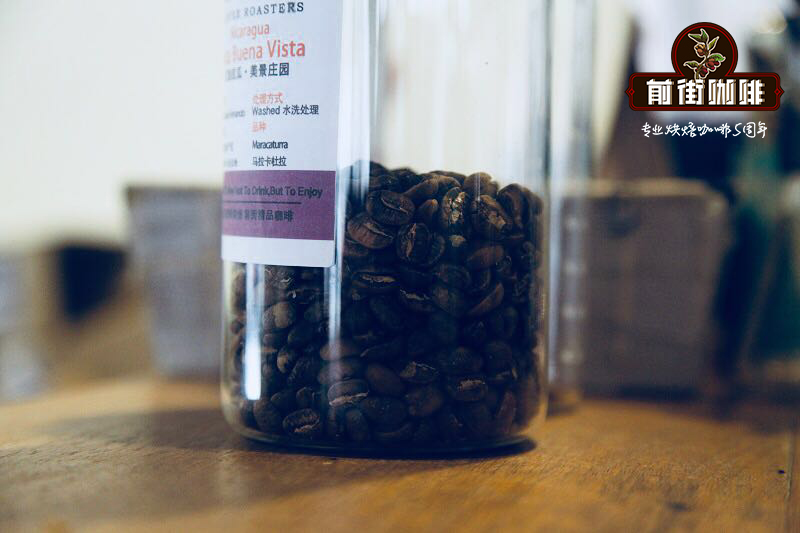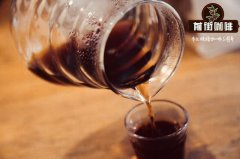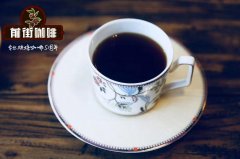Which coffee in Ethiopia is delicious and affordable? Ethiopian coffee beans have a charming floral aroma.

Professional coffee knowledge exchange more coffee bean information please follow the coffee workshop (Wechat official account cafe_style)
Flavor characteristics of Ethiopian coffee producing area _ Ethiopian Yega Xuefei boutique coffee
High-quality Ethiopian coffee can be described as the "best" of coffee, irreplaceable charming flavor, pleasant fruit texture, warm tea feeling, the key point is that the price is approachable, just like our protagonist, it has incredible floral aroma, charming aroma, bright sweetness, and soft fruity when the temperature drops. Want to drink its charm all the time! --
Ethiopia is the birthplace of Arabica coffee and has the most diverse variety on earth. The main producing areas are Sidama, Yirgacheffe, Kochere, Harar, and Djimmah (there are many different spellings of English place names in Ethiopia).
Sidamo, Yega Xuefei, and Kochare are the main producing areas of fine washed beans. The best-known Yegashifi is a small city north of Sidamo, with an average elevation of between 1850 and 2400 and an average annual rainfall of 1300mm. Because of its unique geographical environment and special flavor, it is independent from the Sidamo producing area. Yega Chuefei is famous for its perfume, jasmine and citrus features. Sun Yega Chevy has a strawberry and creamy taste, while Hara / Sidamo has a wild blueberry flavor.
Kochare is a small producing area about 25 kilometers southwest of Yegashafi, where there are about 10000 coffee farmers. Most of the residents' income is mainly harvested coffee, and the coffee varieties harvested are Herilooms with a long history. Because this producing area has more advanced raw bean processing equipment, it has excellent performance in flavor.
Hara is located in the plateau region of eastern Ethiopia, because it is remote, backward and located in the tropical dry climate, so it mainly adopts traditional manual and drying methods.
In addition to the above major regions, the following items are also commonly seen in the market:
Limu and Djimmah. In Western Ethiopia, "Limu" stands for washed coffee and "Djimmah" for the sun-drying process.
Lekempti,Wellega and Gimbi this area of western Ethiopia is very different from the traditional washed Yegashafi. The coffee here is a sweeter fruit flavor, and the citric acid is less obvious.
Ethiopia is the country best at handling coffee in the sun, but in the early days, due to the less stringent requirements of customers and the low level of knowledge of farmers, except for the relatively affluent areas (such as the Sidamo area), most of them are directly exposed to coffee fruits in the grain drying field, resulting in uneven quality of sun-dried beans, and batches with good sun exposure can be amazing. The batches with poor sun exposure are disgusting. In the past, when defective beans were graded according to the proportion of defective beans, the grades of washed raw beans were G1 and G2, and those of sun-dried beans were from G3 to G5. But since 2008, the Ethiopian government has set up an Ethiopia Commodity Exchange (ECX) system, where raw coffee beans from various producing areas are processed and sent to this unit, which is then subdivided by cup testing. Today, Ethiopian sun-dried beans also have a G1 grade.
In general, the planting area of small coffee farmers in Ethiopia is less than one hectare, and exporters invest in sun-drying or washing plants to purchase raw beans from small farmers for centralized shipment. There are also production cooperatives jointly formed by regional small farmers to jointly invest in tanning or washing plants. Famous processing plants include Aricha (Aretha), Beloya (Biloya), Chuchu (chirp), Domerso (Dumeso), Gotiiti (Guotintin), Shakisso (Shaquisol) and Wenago (Venago), all of which are common coffee names.
In recent years, due to the global prevalence of boutique coffee, traceability management and advanced agricultural technology, many Ethiopian sun treatment plants have more stringent requirements on the work quality of pickers and improve the quality of sun scaffolding. Ethiopian sun-tanned coffee is extremely cheap and delicious, which is a blessing for coffee lovers!
Usually most places find high altitude from low altitude, but Ethiopia is just the opposite, it is from high altitude to low altitude. What an amazing coffee growing environment! --
Ethiopia has the best coffee growing environment and the most native coffee varieties, but why do we still encounter coffee that tastes bad from time to time? I think the biggest problem lies in the latter stage, which is simply the problem of "people". In fact, most local people do not have the concept of boutique coffee. In order to harvest convenience and cost considerations, most green immature fruits are not picked. This is the main source of the astringency of coffee, so the only way to find a good 'Ethiopian coffee' is to "constantly test the cup." Once you find a good Ethiopian coffee, it's really a treasure!
--
Introduction to the flavor difference between Ethiopian Yejasuefei and Sidamo coffee beans
Important Notice :
前街咖啡 FrontStreet Coffee has moved to new addredd:
FrontStreet Coffee Address: 315,Donghua East Road,GuangZhou
Tel:020 38364473
- Prev

Coffee beans taste characteristics of rose summer why expensive? How much does the most expensive rose coffee cost?
Professional coffee knowledge exchange More coffee bean information Please pay attention to coffee workshop (Weixin Official Accounts cafe_style) Guixia coffee_Panama Guisha geisha boutique coffee beans Blue Mountain coffee, cat excrement coffee, these have been rare top coffee, in front of rose summer coffee actually still see pale. Guixia
- Next

A new chapter in Ethiopian boutique coffee-the way to the west Ethiopian coffee tomoca
Professional coffee knowledge exchange more coffee bean information please follow the coffee workshop (Wechat official account cafe_style) Ethiopian coffee producing area flavor characteristics _ Ethiopia Yega Xuefei boutique coffee in the introduction of this bean, we want to share with you not just a bean, a flavor or a story, we want to join you into a new Ethiopia
Related
- Detailed explanation of Jadeite planting Land in Panamanian Jadeite Manor introduction to the grading system of Jadeite competitive bidding, Red bid, Green bid and Rose Summer
- Story of Coffee planting in Brenka region of Costa Rica Stonehenge Manor anaerobic heavy honey treatment of flavor mouth
- What's on the barrel of Blue Mountain Coffee beans?
- Can American coffee also pull flowers? How to use hot American style to pull out a good-looking pattern?
- Can you make a cold extract with coffee beans? What is the right proportion for cold-extracted coffee formula?
- Indonesian PWN Gold Mandrine Coffee Origin Features Flavor How to Chong? Mandolin coffee is American.
- A brief introduction to the flavor characteristics of Brazilian yellow bourbon coffee beans
- What is the effect of different water quality on the flavor of cold-extracted coffee? What kind of water is best for brewing coffee?
- Why do you think of Rose Summer whenever you mention Panamanian coffee?
- Introduction to the characteristics of authentic blue mountain coffee bean producing areas? What is the CIB Coffee Authority in Jamaica?

